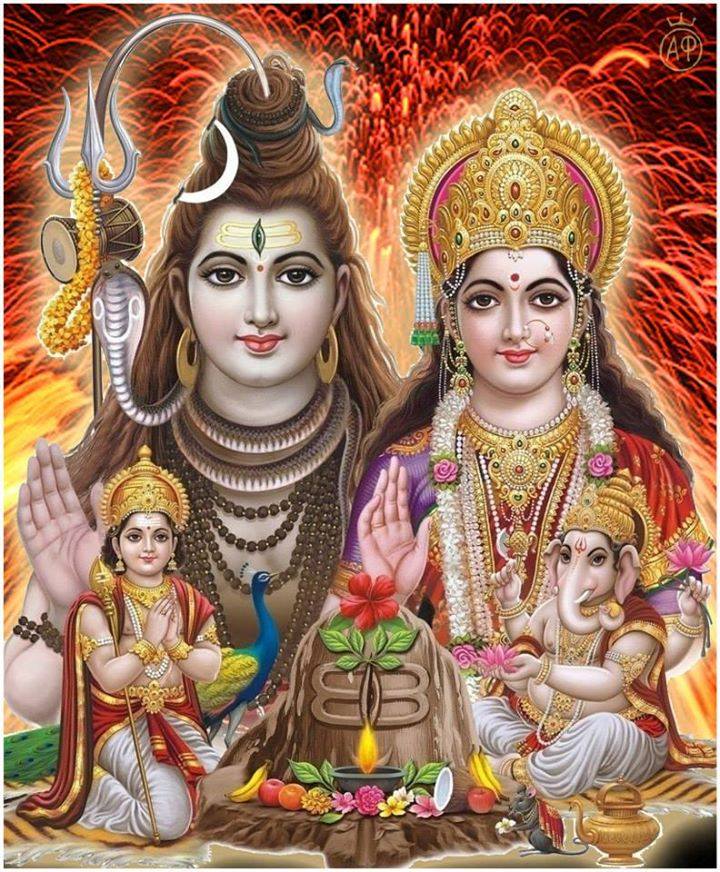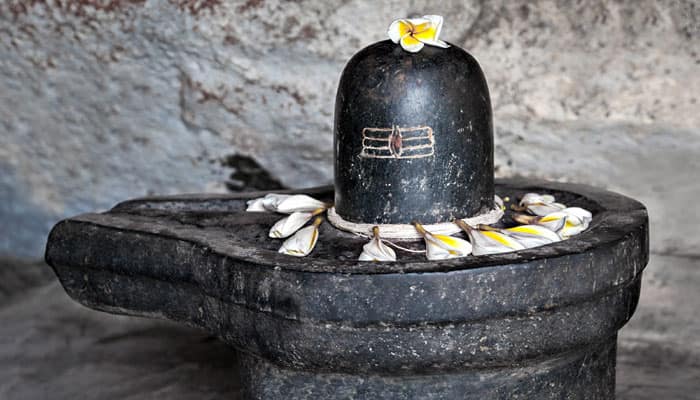- Can I Keep Shiva Linga In Home? If Not, Is There Any ..
- Cached
- Shiva Linga Abhishekam At Home In Telugu News Paper
- Shivling Abhishek - Shivalinga Puja, Lord Shiva Abhishek
On this day, Shiva Lingam, the phallic symbol of Lord Shiva’s energy, is hydrated with the traditional Abhishekam items such as holy water, turmeric powder, sandalwood paste, milk, orange juice, honey, coconut water, curd and sacred ash. How to do puja of shiva lingam at home in telgu. Vibhudendra says: March 10, 2013 at 10:00 am. How to perform abhishekam at home in telugu. Rudra Abhisheka Puja and Yajna (Homam) is done by offering various sacred articles to the Shivlingam along with chanting of sacred mantras. The 2019 Maha Shivaratri Rudra Abhishekam Puja is performed for gaining health, wealth, success and prosperity. To summarize - at home only Narmadeshwar/Bana linga must be worshiped, no other forms of Shiva linga must be worshiped at home. You can immerse your idol after doing their mental puja, to excuse any of your fault knowingly or unknowingly.immerse them in any flowing river or sea. For the first time in New England region, a pooja will be performed on 1,116 Shiva linga. Shri Dwarkamai cordially invites all the devotees to join this Grand event and take blessings from Lord Shiva Parvati. Performing of Rudra Abhishekam.
Often referred to as “Bhole Nath”, for being the most soft hearted and for being someone who can be easily pleased is the benefactor of immense prosperity and wealth. He is the heavenly companion of Goddess Parvati is the provider of perennial happiness. To get the divine blessing from Lord Shiva people do Puja anad Abhishek of Lord Shiva on the day of Maha Shivaratri. Shivling Abhishek is done for the Lingam which is the representation of Shiva, the destroyer of evil and creator of a fulfilling life. In various temples across the country, people hang vessel field with water or milk or other materials, over the Shiva Lingam.
Here is an elaborated method of Shiva Lingam Abhishekam offered during Shivaratri:
- Take a copper plate and install Shiva Linga into it and begin the Puja by chanting certain Mantras. One can simply chant the very popular mantra “Om Namah Shivaya”. Abhishekam is done with materials such as curd, ghee, honey, sugar, milk, coconut water or some fruit juices.
- Abhishekam is basically the process of bathing Lord Shiva and it is believed that just with this process all the doshas of ancestors and all other kundali related doshas are abolished. Panchamrut Abhishek basically is the best way for pleasing Lord Shiva.
- In the present time, the Abhisheka offred to Lord Shiva is referred to as Rudra Abhishek which is believed to be a method which helps in fulfilling all the desires of the devotees. The name comes from the name of Lord Shiva, Rudra.
- Ancient scriptures tell that Lord Shiva likes the offering in the form of stream of water and hence those who perform the abhishek in that way are blessed the most by the almighty. It is also very important to offer Bilva leaves while offering Puja to the Shiva Linga.

Doing the Abhishek during Shivaratri with different materials have their own implications and benefits. Here’s how each of the materials affects one’s life:

Can I Keep Shiva Linga In Home? If Not, Is There Any ..

1. Curd: Curd Abhishek gets people good and obedient children.

2. Milk: Milk Abhishek provides long life.
3. Honey: Honey Abhishek is considered the most sacred of all the abhishekas and derives the benefit of all the worshipping all the manifestations of God. It is also believed to provide sweet voice.
4. Ghee: Ghee Abhishek provides Moksha or salvation from all the pains of life.
5. Panchagavyam: It helps in removing all the sins of a human being.
Cached

6. Panchamrutham: It helps in obtaining wealth.
7. Rice powder: It helps in freeing us from all debts.
8. Sugar Cane Juice: It eradicates any kind of enmity and provides good health.
9. Lime juice: It frees us from the fear of death.
10. Sandal Paste: Provides the grace of Goddess Lakshmi.
Using Aloe is also very significant while doing Lord Shiva Abhishek. This is because Lord Shiva wears the God of snake called Nageshwara around his neck and so he loves aloe for it attracts snakes. These beliefs and rituals are an offshoot that comes from the elucidation of Vedas which is the holy text of Hindu religion.
Shiva Linga Abhishekam At Home In Telugu News Paper
It is said that worship of the Linga at midnight time is considered preferable. Recitation of the above Mantra five crore times is considered highly fruitful.Worship along with ‘Shodasopacharas’ or sixteen kinds of Services is to be performed. [The Services are: ‘Asana’ or Seating, ‘Padyam’ water for washing the Deity’s feet, ‘Arghya’ or water for sipping, ‘Snana’ or Body wash, ‘Anulepana’ smearing the Deity’s Body with Ash, Gandham etc.; ‘Dhupam’ or Inscense, ‘Dipam’ offering lights with oil-soaked cotton vicks, ‘Naivedyam’ or offering Food and fruits, ‘Tambula’ or betel leaves and nuts, ‘Paneeya’ offer of Ganges water / coconut water, ‘Vastram’ or clothing, ‘Alankaram’ or ornamentation by holy leaves of Bilva, flowers etc; ‘Gandham’ or Sandal paste, ‘Achamaniya’ Ganga water for sipping and ‘Arati’ or camphor lighting and finally the most important ‘Mantra Pushpa’ or Vedic Chanting and Stotras as well as Vedic Hymns of ‘Namakam’ and Chamakam’/ ‘Mahanyasam’.] The worships are commended specially on the banks of Holy Rivers like Ganga, Sindhu or Sarasvati or at the Temples on the banks of any other Rivers like, Yamuna, Narmada, Godavari, Kaveri, and so on. Worship at Sacred Places like Badari, Kedar, Kasi and at other Dvadasa Linga Kshetras is highly recommended. On Sundays such worships are notably recommended for Siva Pujas, while Mondays are significant for Durga, Tuesdays for Kartikeya, Wednesdays for Vishnu, Thursdays for Lord Yama, Fridays for Brahma and Saturdays for Indra and other Planetary Heads. While Siva Linga Pujas performed at the Puja-designated places in one’s residence are nodoubt significant, such worships at Cow-sheds are ten times more beneficial; the Pujas conducted in Temples in the precincts of Tulasi ( Basil plant) are ten times more fruitful; further ten times more beneficial with multiplier effect at Sea shores, mountain tops, and so on. But the best worship is with ‘Bahyantara Suchi’ or Physical and inner purity! The most auspicious timings for the Worship of Siva Lingas are the days coinciding Surya Sankranti, ‘Tula’ and ‘Mesha’Sankrantis, as also Lunar and Solar Eclipse days. In the normal course, Siva Linga Pujas are best performed during the ‘Magha’ month and on every Krishna Chaturdasi days. On every day of Kartik Month, a full fledged worship along with Agni Homas are specifically fruitful for ensuring excellent health, particularly related to long standing diseases? Most importantly, regular Siva Linga Pujas on every Sundays would bless the devotees with Happiness in their life times and Salvation thereafter!
Major kinds of ‘Siva Lingas’ are Svayambhu Linga, Bindu Linga, Pratishtha Linga, Chara Linga, and Guru Linga. Again, there are Lingas of Gross Nature, devotion of which is meant for fulfillment of Material desires and also Subtle Lingas aiming at Spiritual Bliss and Salvation. The Parthiva Lingas are however the most commended, especially suited for Kali Yuga just as Ganges is the best of the Rivers, Kashi is the best place of pilgrimage and Omkara is the best Mantra. Getting clean in physique and mind, wearing Rudraksha mala by neck and Bhasma on forehead, chanting names of Siva like Hara, Mahadeva, Soolapani, Pinakadhrik, Pasupati and Mahesa, the Parthiva Linga is immersed in a river or a water body, or placed on a pedestal in a forest area or a mountain. One should keep on reciting Siva Panchakshari, viz. ‘Om Namaha Sivaya’ and perform worship as prescribed in the Scriptures. Starting from Ganesh Puja and Planetary Heads, Devi Bhagavati and the Ultimate Deity of Siva, the worship is best performed facing North, along with the Sixteen Services with high devotion and commitment for fulfillment of desires ranging from good health, longevity, wealth and ‘nishkama moksha’. The service of bilva puja, ‘abhisheka’( Vedic bath of milk, coconut water and finallyof ash or bhasma and so on along with ‘Naivedya’ are an integral part of the worship. More specifically, each service be designated by addressing the Lord as follows: Om Namah Sivaya- Prokshana (sprinkling of water) on various Puja materials; Om Namah Rudraya-Kshetra Suddhi (Purification of surroundings); Om Namah Nilagreevaya-Panchamrita prokshanam (sprinkling of mixture of milk, curd, sugar, honey, fruit); Om Mahesaya Namah-Asanam ( Seating); Om Paramesvaraya Namah- ‘Nyasam’or identification of self with by Paramesvara by offering the entirety to Him; Om namah Visvarupaya-Padyam or water for cleaning His feet; recitation of Rudra Gayatri [ Om Bhur Bhuvah Svaha Om Tatpurushaya Vidmahe Maha Devaya Dheemahi Tanno Rudrah prachodayaat]; Om Ghrishnaya Namah- Uttareeyam ( clothing); Om Parthaya Namah-Bilva Patra Puja; Om Kapardineya Namah-Dhupam ( incense sticks); Om Jyeshthaya Namah-Dadhyanna or curd rice Naivedyam; Om Rudraya Namah- Phalam or fruits; Om Vrajaya Namah- ‘Sakalam’ or every thing; Om Hiranya Garbhaya Namah- Dakshina or Present to the Pandit performing the worship; Om Devasya Namah- ‘Abhishekam’; Om Sambho namah- ‘Neerajanam’ or Aarathi; Om Parama Sivaya Namah-‘ Sashtanga Namaskara’ and offerings of Siva Mudras]. Keeping in mind the Five Faced Bhagavan with the names of Sadyojata, Vamadeva, Aghora, Tatpurusha and Esana, one concludes the worship by reciting: Bhavaya, Bhavanasakaya, Mahadevaya, Dhimahi / Ugraya, Ugranasaya, Sarvaaya, Sashi Mouliney!
Shivling Abhishek - Shivalinga Puja, Lord Shiva Abhishek
While performing the Worship to Siva Lingas, significance is attached of applying ‘Bhasmas’ or wearing ‘Rudrakshas’. ‘Maha Bhasmas’ are to be applied only after securing the burnt cow dung cakes in ‘Agneya Bhasmas’ ( homams) or in the course of ‘Yagnas’ while reciting ‘Mantras’ and only the former varietyis used for ‘Tripundras’ invariably by Brahmanas and ‘Svalpa Bhasmas’could be used by others with devotion. Rudrakshas are available in a wide variety from the trees which in the days of yore sprouted from the tears of Siva Bhagavan- which eventually became large water bodies when He concentrated with wide eyes open for several years to create a powerful weapon known as ‘Aghora’ to destroy a Demon called Tripurasura. This special tree yielded beads which are the Rudrakshas now worn by devotees for excellent results, depending on the number of cuts on the bead- faces and the corresponding Devatas giving away boons the desired virtues or results. Eka Mukhi Rudraksha is considered as Bhagavan Siva Himself providing the greatest boons of destroying even the worst sins including ‘Maha Patakas’.(Eka vaktram Sivah Sakshat Vimukti Phala pradam). Two-Faced Rudraksha is represented by Deva and Devi; the Three Faced one bestows all kinds of ‘Vidyas’; The Four Faced one is Brahma; the Fifth Faced is Rudra; the Sixth is Kartikeya; the Seventh is Manmadha; eighth is Bhairava; ninth is Durga, Ten- Faced is Janardana; Eleventh is Paramesvari; Twelfth is Aditya; Thirteenth is Visva Deva and Fourteenth is Parama Siva Himself. The Mantras that the persons wearing the Faces respectively are: Eka Mukhi: Om Hrim Namah; 2) Om Namah 3) Om Kleem Namah 4) Om Hreem Namah 5) Om Hreem Namah 6) Om Hreem Hum Namah 7) Om Hum Namah 8) Om Hreem Hum Namah 9) Om Hreem Hum Namah 10) Om Hreem Namah Namah 11) Om Hreem Hum Namah 12) Om Kraum Kshaum Roum Namah 13) Om Hreem Namah and 14) Om Namah.

